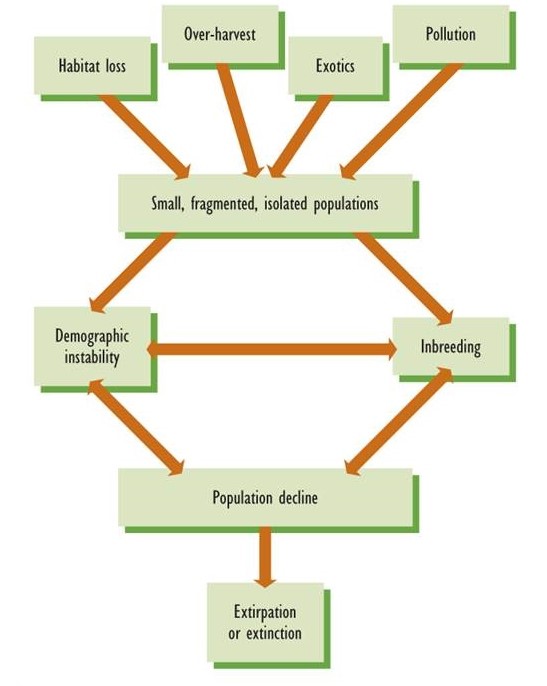
This upward shift occurred irrespective of the habitat specificity of the studied birds. An analysis of the elevational distribution of birds in Southeast Asia between 19 observed an upward shift of the lower and upper boundaries for 94 common species, presumably in response to global warming. Direct effects are mostly related to temperature and precipitation changes that affect individual organisms, populations, species distribution, and ecosystem compositions and functions.įor example, climate change can potentially cause species to move to higher elevations in search of more suitable habitats. Climatic factors can affect biodiversity directly and indirectly.

The Intergovernmental Panel on Climate Change (IPCC) has reported that, globally, up to 30 per cent of species are at increasing risk of extinction, whereas approximately 15 to 40 per cent of ecosystems are being affected by climate change.
Biodiversity crisis examples drivers#
In contrast to proximate factors, the underlying drivers of biodiversity decline can operate at scales ranging from the national to the global.Īpart from habitat destruction, other processes that contribute to biodiversity loss in the region include biodiversity overexploitation and the introduction of invasive species.įigure 1: Driving forces and processes of biodiversity loss in Southeast Asia Climate change and biodiversity loss On the other hand, the underlying drivers include population growth, poverty, urbanization, policy failures, institutional failures, trade and globalization, as well as climate change and variability. Proximate factors of biodiversity loss are those human activities that directly affect habitats, such as agricultural expansion, biofuel production, wood extraction, infrastructure development and biomass burning. In broad terms, habitat destruction processes are driven by a combination of proximate and underlying factors (see figure 1). In the absence of appropriate intervening policies and incentives to tackle the direct causes and underlying drivers of deforestation, a quarter of Southeast Asia’s biodiversity may be wiped out by 2100. In spite of the implementation of conservation and reforestation projects, the rates of deforestation and forest degradation are still high in the region.
Biodiversity crisis examples download#
( Download the report and references from the sidebar on the right of this page.) We found that various processes associated with habitat destruction, such as habitat conversion, degradation and fragmentation, are linked to biodiversity decline in the region. In 2010, as part of our research at the United Nations University Institute of Advanced Studies (UNU-IAS) and the Global Land Project in Hokkaido University, we conducted a review of the causes of biodiversity decline in Southeast Asia. What drives biodiversity loss in the region? Although the number of species that has actually become extinct from the region is small, the relatively recent widespread deforestation and the associated fragmentation of natural habitats is expected to accelerate biodiversity decline in the coming years.

However the region’s diverse biological resources are currently threatened by many climatic and human-related factors.

Its montane ecosystems are particularly noted for their high diversity of ferns, mosses and orchids. The region contains three mega diverse countries - Indonesia, Malaysia and the Philippines - where four of the world’s 25 biodiversity hotspots are located. Southeast Asia is a bio-cultural hotspot encompassing about 20 per cent of global plant, animal and marine species.


 0 kommentar(er)
0 kommentar(er)
